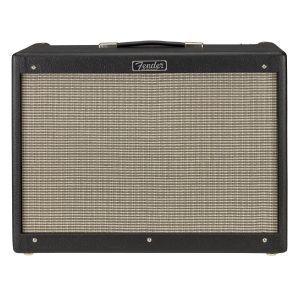
- Celestion 12″ A-Type Speaker
- Spring Reverb Modified For Improved Smoothness
- Lightweight Pine Cabinet
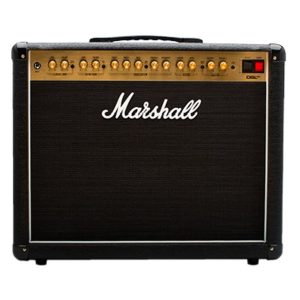
- Celestion V Type Speaker
- Reverb High And Low Power Settings
- Softube Emulated Output
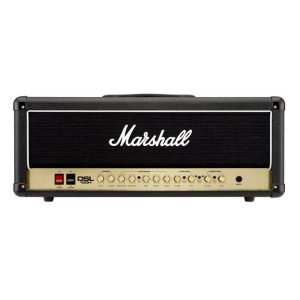
- Digital Reverb
- 2 Channels – Classic Gain & Ultra Gain (Foot Switchable)
- 1×12″ Speaker

- High And Low Gain Inputs
- 120 Watts (Rms) Into 16, 8, Or 4 Ohms (Switchable)
- 2 Channels Preamp Switchable

- Hall, Plate And Spring Reverbs
- 10 Core Tones Available Directly From The Front Panel
- 3-Band EQ, 8 x Tone Settings
Choose the Best Metal Amp Under $1000
Customer’s Choice: the Best Rated Metal Amps Under $1000
25 users answered this survey. Please help us improve this review!
Premium metal music amplifiers under $1000 are units that provide a high level of power and quality sound. They offer the best features for professional musicians, but they can also be great options for beginners because these amps will not require an additional purchase in order to get started playing.
When buying premium amplifiers it is important to consider some features such as wattage range and speaker type. There are many options available on the market today, but the following guide will help you make an informed decision when choosing your amplifier based on reviews of various products with price tags below 1000 dollars that have been selected by experts in this field.
Benefits of music amplifiers:
- Enhance the sound of musical instruments and vocals;
- Allow you to play amplified versions of songs from a speaker instead of playing them on an acoustic instrument or through your phone’s speakers;
- Make it possible for you to play your music at an appropriate volume;
- Can be used as part of a musical ensemble and allow multiple people to listen without making too much noise or putting strain on anyone musician’s instrument;
What is the best metal amp under $1000? That’s a question that many musicians and guitarists ask themselves. To answer this question, metal music experts went out and got product reviews for some of the best metal amps on the market today. Check the premium amps from Marshall, Fender, Roland, Peavey, and more! Below you will find the list of what experts think are the top 5 best metal amps under $1000.
Table of Contents
Fender Hot Rod Deluxe IV 40 Watt Electric Guitar Amplifier – the Editor’s choice!
 Fender’s newest addition to their legendary Mod Series, the Hot Rod Deluxe IV is an amazing-sounding 40-watt amp that beautifully captures the sound of vintage Fenders. That “just out of a garage” vibe you’ve heard about for years? This one does it better than anyone else.
Fender’s newest addition to their legendary Mod Series, the Hot Rod Deluxe IV is an amazing-sounding 40-watt amp that beautifully captures the sound of vintage Fenders. That “just out of a garage” vibe you’ve heard about for years? This one does it better than anyone else.
With two channels features semi-parametric EQs, tremolo, and reverb – you’ll be able to dial in anything from shimmering clean tones to jagged rock sounds with low-end punch, perfect for any style or venue.
Sometimes it feels like you live in a world of distortion, not too many to mention what has been going on recently. Here’s a warm tube tone for your sonic endeavors, with enough power to make anything happen which you deem worthy.
It doesn’t matter if you’re in the studio or in your bedroom, this amp is perfect. With crisp cleans and warm overdriven tones, this simple but beautifully designed amplifier fits any space with its 40 watts of power.
Marshall Amps Guitar Combo Amplifier – the best for the tone quality!
 The Marshall Amps Guitar Combo Amplifier is the definition of belting out tunes to the tune of 40-watts of power. Bring your guitar to life with dual-channel, tone-shaping 3-band EQs, and volume control free movement on stage with remote footswitch bypass features.
The Marshall Amps Guitar Combo Amplifier is the definition of belting out tunes to the tune of 40-watts of power. Bring your guitar to life with dual-channel, tone-shaping 3-band EQs, and volume control free movement on stage with remote footswitch bypass features.
Channeling your tone straight through Marshall Amps means your sound doesn’t have to survive any more roadblocks. The tube-powered 40 watts give you power for days and unbeatable tonal quality that knocks down even the toughest of volume monsters.
Also includes a headphone jack so you can keep it private when cramped studios require minimization during recording sessions.
It’s easy to get lost in this Marshall Amp Guitar Combo Amplifier. The amp has an amazingly powerful sound and tonal quality, with a dual-channel function. You can modify it, however, you want by adjusting the 3-band EQ. And for those who like to rock onstage, the footswitch is by-passable just for your convenience!
Marshall DSL Series DSL100H 100-Watt All-Tube Guitar Amplifier – the best for versatility!
 From the sound of Zeppelin to the sound of Metallica, this tube amp is versatile. That means you can get your power-chord rock out on one night, be a classic southern bluesman with some Albert King or Stevie Ray Vaughn sounds for another night, and then turn things down while playing folk songs on acoustic guitar during an outdoor festival.
From the sound of Zeppelin to the sound of Metallica, this tube amp is versatile. That means you can get your power-chord rock out on one night, be a classic southern bluesman with some Albert King or Stevie Ray Vaughn sounds for another night, and then turn things down while playing folk songs on acoustic guitar during an outdoor festival.
The adjustable power settings let you take it anywhere from bedroom jamming to up-front stage performance.
The Marshall DSL Series 100 Watt Tube Guitar Amplifier isn’t just for beginners – its pure Marshall crunch will make any player’s day brighter.
It packs plenty of low-end punch without compromising clarity anywhere in the sonic spectrum that helps accurately reproduce everything from raw funk rhythms to ringing harmonic content.
There’s nothing like hearing a Marshall amp. In the studio, at the gig, or in your practice space- this all-tube 100-watt amplifier delivers classic rock tone and plenty of high-octane overdrive with impressive headroom available to take you from clean sounds to the heavily driven territory.
Peavey 6505 Metal Guitar Amp – the best for the loud sound!
 Peavey tones are spot on, delivering the perfect sound for metalheads. Whether you’re at a small club gig or rocking out on stage in front of 5,000 people, this amp delivers a highly accurate tone that’s punchy and loud – easy to pick out among the instruments onstage for all to hear.
Peavey tones are spot on, delivering the perfect sound for metalheads. Whether you’re at a small club gig or rocking out on stage in front of 5,000 people, this amp delivers a highly accurate tone that’s punchy and loud – easy to pick out among the instruments onstage for all to hear.
The Peavey 6505 Metal Guitar Amp is built with an incredibly strong yet compact chassis for easy maneuverability at any location.
With 2 channels and 120-watt output power delivered either through 16 ohms, 8 ohms, or 4 ohms outputs – with protection circuitry – this amplifier gets louder than ever before!
The Peavy’s 6505 Metal Amp has a sound that is not for the faint of heart. It’s a fantastic amp with high and low gain channels, preamp switches, rugged construction, and tuneful power.
BOSS Guitar Combo Amplifier – the best solid-state amp!
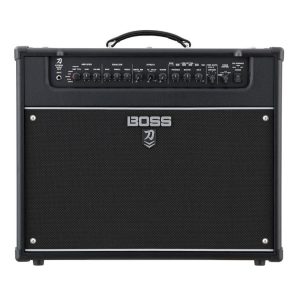 The BOSS Guitar Combo Amplifier is a portable and powerful amplifier, with an excellent loudspeaker. This amp doesn’t just sound great – it’s the king of the solid-state amps.
The BOSS Guitar Combo Amplifier is a portable and powerful amplifier, with an excellent loudspeaker. This amp doesn’t just sound great – it’s the king of the solid-state amps.
Whether you’re going for a clean tone, a crunching rhythm guitar sound, ripping leads, or playing acoustic music on your guitar plugged in through its dedicated acoustic channel, there’s a model that’ll suit your style perfectly.
This amp is not only portable but is powerful, giving you excellent sound quality. The variation switch increases the total number of core amps tones up to 10, so no matter which genre of music you play there’s one for you! Also included are 60 timeless BOSS effects, always accessible in Tone Studio when needed.
This Boss amp is very powerful and great for metal and heavy music guitarists. With 8 different distortion modes and tons of other features you can customize to fit your needs, this amp has one goal: to make you the best musician that ever played the guitar.
The Buyer’s Guide
Main Features:
- Tone
The first thing to consider when looking at the best metal amps under $1000 is tone. You want an amp that can give you great tones for genres like metal, but you also need to make sure it has enough room and volume for live performances in smaller venues.
While different amps can produce various tones, if you want an amplifier for playing metal, then certain features should be present in your choice of equipment. The first thing is a bass response – when looking at amplifiers under $1000 specifically designed for metal players, they will have more emphasis on low-end frequencies than clean or blues-oriented amps do.
Furthermore, distortion must be either added with overdrive pedals or built into the amp itself. Lastly, there are gain controls that adjust how much “dirtiness” goes into the signal before hitting the power section of the amp where it reaches its full potential volume boost (this is the reason why metal amps are so loud).
There’s also a variety of brands to choose from, but the best ones have been made by Marshall and Mesa Boogie.
Marshall is known for its high-gain amplifiers that can produce extremely heavy sounds, while still being able to generate clarity when required. Mesa Boogie has more of an emphasis on clean tones with lots of headroom (so your amp doesn’t go deafeningly loud), which means they are better suited for death metal rather than standard genres like hard rock or classic metal.
If your goal is a versatile practice or studio amp then this might not be as big of a concern, but if you’re going on tour in small clubs where there might only be 50 people in attendance then having a lot of power isn’t necessary – just something with good clean sound will do.
- Distortion
Distortion is what characterizes metal guitar. That’s why it’s important to have a good distortion pedal when you play this genre of music. Distortion can be achieved in many ways, from amps that are already distorted without having to add any pedals or even with an overdrive pedal placed before the amp itself (although not all pedals give out enough gain for metal). Therefore, if your amp doesn’t come with built-in distortion, make sure you get one!
Distortion pedals are great for adding more gain to the signal, but they also come with their limitations.
First of all, distortion is not always your thing and it may be better for you to rely on the natural tone of your guitar or amp (if that’s what you like).
Second, if you already have an overdrive pedal then try using this instead! It will give out a much clearer sound than any modeler can do. If however there’s no time when playing live where having too many pedals around won’t bother you, choose between one built-in distortion in the amp modeler or an external device based on how exactly it fits into these constraints.
- Effects and Presets
Effects and presets are an important part of any amplifier. Pedals can be placed either before or after the preamp in terms of where they get their signal. However, that doesn’t mean one is necessarily better than another for metal music.
Many players place reverb (and other space-taking effects) near the end of their pedal chain because it acts as a type of noise gate. No matter what order you put your pedals in though, having at least some form of modulation will really open up your tone palette to include even more dynamic sounds than just straight guitar through an amp.
Many of the best metal amps below 1000 dollars have built-in effects like reverb, delay, chorus, and others that enable musicians to play different types of music genres including rock, pop, punk more easily without any other extra equipment. Some models also have USB connectivity so can record their songs directly into their computers.
- Loudspeaker Size
The best metal amps under $1000 usually come with either one or two speakers. However, you can often buy an extension cabinet separately and connect it to the main amp if you want to make your sound louder (i.e., bigger and heavier). So do not worry too much about having a small speaker, as this is easy enough to fix later on by adding another speaker.
- Wattage & Power
The output stage will determine what wattage of power rating your amp has. Typically, speakers need anywhere from 30W all the way up to 120W RMS (that’s Root Mean Square which is the actual continuous power or watts). You can get lower wattage heads and cabinets that are great for bedroom practice, small gigs, or recording.
If you want to play large venues with your band then 100W is the minimum amount of power needed; this will be loud enough for any gig you’ll ever do unless it’s an outdoor festival where you might need even more power (such as 200W) to compete with other instruments on stage that could drown out your amp.
The best metal amps under $1000 offer plenty of power at 300-500 watts RMS but remain lightweight and portable because having heavy equipment isn’t cool unless we’re talking about tone.
A general rule of thumb is to determine how loud you’ll need your amp and go from there. If you play in a garage, bedroom, or at low volumes, even an 80-watt amp should be fine for practice purposes. On the other hand, if you perform live shows or plan on cranking it up when jamming with friends then something around 100 watts would probably do well.
For most applications, however, most music experts recommend 150 watts, as this seems to strike a nice balance between clean headroom and power without breaking the bank.
Remember that wattage doesn’t indicate tone – oftentimes amps will have slightly different tones despite having similar wattages because they use different speakers and amps.
Some of the best metal amps under $1000 are often in the 150-300W range. For example, Randall RG75G is 300 watts while Orange Amplification Rockerverb 100 Head is only 100 watts. If you play in small venues or at home with a band then don’t worry about wattage.
However, If you plan to play bigger stages and need powerful enough sound for big audiences (i.e., more than 300 people), consider getting an amp that has higher power output like 500W RMS or 1000W RMS.
- Cabinet
When choosing an amp cabinet, you need to decide if the tone is more important than volume. A larger speaker will produce a louder sound, but it may also be muddier and less defined in comparison to a smaller speaker.
If you’re looking for something that’s going to keep up with your metal bandmates on stage, then look at cabinets with 15-inch speakers or even 18-inch, which tend to have enough power behind them while still keeping their definition.
If you’re going to be playing at smaller venues, a cabinet with 12-inch speakers will still keep up. If your band is more rock and roll or softer metal, then something like the Marshall 1960A speaker cabinets would work well for those genres as they don’t have nearly enough power behind them for heavy music.
You should also consider how many other cabs are being used on stage – if it’s just one guitarist using an amp head but there are two bassists sharing their own separate rig, having four 15-inch cabinets probably isn’t necessary unless you want everyone in that group to stand out independently of each other.
- Head
An amp head is a metal case with input and output terminals, channels for connecting the speaker cables. The amplifier circuit itself is inside of it. It provides an audio signal to a loudspeaker or headphones. Amps that have this feature are called “Heads” too because they can be separated from their speakers so you can take them anywhere you want without any additional equipment needed.
Also, the term “amp head” is usually used for amps that are not easily portable. That means they have to be plugged into the power outlet and most likely won’t fit in your backpack or handbag. Of course, there are also smaller heads with a lower wattage but you will still need another speaker cabinet to plug them into if you want to play it anywhere else than at home.
One of the first considerations when buying a new metal amp is deciding if you want to go with open back or closed back. The vast majority of guitar amps are designed for use in an enclosed space, but high-gain amplifiers often have one side covered by solid wood rather than mesh speaker grilles. Some players prefer this design because it provides them with more bass response and control over their tone.
Others prefer to leave both sides uncovered so that they can hear other instruments on stage better during live performances where there isn’t as much sound isolation between performers.
- Dimensions and Weight
The dimensions are not that important. It is better to look at the weight of each amp because it affects how much time you will need to set up your equipment before playing live or in a studio session. In addition, the weight affects how easy it is to transport from one place to another. While each amp has a different design, some are lighter than others and this makes them easier to handle.
The dimensions and weight of each product can be found on their official websites or other trustworthy online stores selling these products. Once you have all this information in mind, it will be easier to make a decision about which one suits your needs best.
- Amp Controls:
- Volume. The master volume control sets the overall output of the amplifier. As you turn this knob up towards loudness, watch out for clipping – that means it sounds really distorted and cannot put out any more power. This can damage speakers and cause a permanent loss in tone quality. You want to find a good balance between enough volume but not too much where there’s no headroom left for tasty tones later on down the line;
- Bass. The bass control on your amplifier is like a master volume for the low-end frequencies of your guitar tone. It boosts (or cuts) all frequencies below 250Hz, depending on where you set it and how much boost or cut you’re using. You can use this to dial in certain tones when playing different musical styles such as jazz, blues, country, etc. This control also works well with other pedals that add more bottom end such as overdrive/distortion effects; they will sound even bigger when adding some extra oomph from an amp’s built-in equalizer;
- Middle/Midrange – controls middle frequencies that allow fine-tuning of your overall tone between the bass and treble. As you turn this knob up, it boosts (or cuts) all frequencies above 500 Hz, depending on where you set it and how much boost or cut you’re using. You can use the mid-range control to sculpt your tone when playing different musical styles such as jazz, blues, country, etc. These settings make a noticeable difference in the sound of your guitar;
- Treble – works as an equalizer for high-end frequencies. Turning up your amp’s treble will add more brightness to the sound of your guitar that is perfect for clean tones. Turning down gives a warmer overall tone that sounds great with overdrive/distortion effects too! This makes a huge difference to the overall sound of your metal machine and can make a big difference in the style of music you play;
- Gain – the gain knob controls how much overdrive/distortion comes from your amp when playing above that natural level! It works by increasing (or decreasing) the amount of “clean” signal coming through to be pushed harder into clipping, giving more sustain, compression, and distortion. This is great for getting some nice crunchy tones with loads of sustain without having too much bass or high-end frequencies; it really helps give definition to your tone which takes away any muddiness that may occur using other pedals such as overdrive & distortion effects on their own. Styles like nu-metal or rock where there are lots going on at high gain, this is a must-have control;
There are other tone controls such as noise gate and phase switch on some amps but they’re not 100% necessary for metal amps. If you can get your hands on an amp with these extra features then it’s well worth checking out how much difference they make to the overall sound of your guitar – just don’t forget that there’s nothing better than playing through a good old tube amplifier!
Solid State vs. Tube Amps for Metal
The first question that many beginners ask is whether they should buy a solid-state amp or tube amp. While there are some differences between the two, there aren’t any major ones that would stop you from purchasing one over another.
Solid-state amps tend to be more reliable than their tube counterparts because of how simple they are to use and maintain.
Tube amplifiers can produce better tones but also require more maintenance due to having tubes that need replacing every so often as well as needing other repairs throughout their lifetime. However, if you don’t have much experience with guitars then it’s best not to invest in an expensive tube amplifier until you know what kind of music styles do you usually play – both types will for metal guitar playing equally well.
Also, if you plan on playing live then tube amps can be more expensive to maintain and keep up with because of how often they need their tubes replaced.
Amps Care and Maintenance
The first thing you’ll want to do is invest in a cover or case for your metal machine. You never know what could happen on the road, and it’s best to be prepared with something that will protect your amp from damage while still allowing easy access when you’re ready to perform. Many amps even come with their own soft cases, so if yours came this way then start there as well as checking out reviews before making any big purchases!
What other maintenance should you expect? This depends entirely on how often you plan on using it – those who have one just for practice at home may not need anything more than an occasional check-up from time to time whereas those looking to spend some serious time rocking out might consider looking into a more in-depth maintenance plan.
For amps that require oiling, you’ll need to make sure the right kind is used and proper intervals are set so everything will run smoothly without any damage to your equipment. If something seems broken or not working properly then it’s time for a trip down to see the pros! We’ve got plenty of them listed on our site if you’re looking for someone local with expertise in amp care and repair.
When it comes to metal amps, things can get pretty hot if you use them for extended periods of time. While the heat won’t damage your machine right away, it will eventually cause some issues. You’ll find that a lot of high-end models come with features to help keep everything cool and even prevent this from happening in the first place!
This is especially important when using a powerful amp on stage as opposed to practicing at home – those who are serious about their music should invest in high-quality cooling capabilities no matter what they’re going through because not only does your safety depend upon it but so do the overall sound quality and life span of your equipment!
FAQ
How do you choose a metal guitar amp?
There are several factors to consider when choosing an amp. Let’s look at some of the most important points:
- Size. Larger amps are typically louder, but they also tend to be heavier and more expensive. If you’re looking for something small enough to carry with the rest of your gear when gigging or traveling, go for a smaller model like the one in this article (it will still get loud enough). Also, remember that metal guitar tones require lots of gains – if an amp doesn’t have it, there’s no point in buying it;
- Tone. Many different types of music use heavy distortion; aim for an amp that has plenty of gain on tap (i.e., high head) so it can handle any genre;
- Wattage. An amp’s power should match your needs; if you’re playing at home, a 100W tube head is more than enough (and it will sound better and be less likely to blow out the walls). For smaller venues like coffeehouses or pubs that don’t mic an amp – or for larger ones where you won’t need as much volume – a 50W model might do fine. A 25/50/100 W combo can handle small clubs but may not have as much clean headroom as a bigger unit with twice those watts would offer;
- Budget. Many amps in this price range sound very good – if it’s your first amp, don’t worry about spending more than $1000 (although a few models may cost slightly more). You can always upgrade later;
What amp does Slipknot use?
Slipknot’s choppy distortion is aided by a high-gain amplifier. Jim Root likes his huge, loud Orange amps. He does have a signature Dark Terror amplifier, but he doesn’t always use it in a live setup – he needs something with more oomph to go with the band’s massive shows. Instead, he chooses the bigger Rockerverb 100 and an Orange 4×12 loaded with a Celestion Vintage 30 instead of the Dark Terror.
The harsh British tones of his amplifier complement his bandmate’s rig, which adds each Slipknot song its own distinctive sound. Jim Root’s tone is based on a variety of amp brands, including Marshall, Victory, and Blackstar. It’s a timeless combination that many metal musicians have utilized since the 1980s.
What tuning is Slipknot in?
Mostly, they use drop A and drop B tunings in each album.
What tuning is Metallica?
Why does Metallica perform live in an Eb tuning rather than just E Standard? According to several interviews, this assists James Hetfield with his voice. His vocal chords would be overworked if he played in E Standard.
What tuning is Korn?
To get his distinctive tone, Fieldy from Korn mutes the mids on his basses, lowers the EQ all the way down to 180 Hz, and tunes them to A, D, G, C, F. This distinguishes Fieldy’s bass from the two seven-string guitars’ low end rather than being overly muddy.
Did Jimmy Page use Orange amps?
Yes, Jimmy Page is known to use the Orange Rockerverb 100 MKII amplifier. This amp has also been used by many other well-known musicians – Thurston Moore of Sonic Youth and Chad Kroeger of Nickelback.
Jimmy Page used Orange amps to create the force of Zeppelin, which was larger than their name. He’s been addicted to Orange amps since the 1970s when he began using them alongside a few other amplifiers.
Are Fender amps good for metal?
Fender amps are known for their clean, bright tones. They excel at country-western styles and blues-rock genres like surf music. Their unique tone is not suited to harder rock or metal sounds, however, they can be used if you want a crisp sound that cuts through the mix without adding too many bass frequencies.
Are Laney amps good for metal?
Laney amps are known for their high quality and durability. They have a vast range of amplifiers that cover all genres including metal. Many famous musicians, such as Dave Grohl (Nirvana & Foo Fighters), Brann Dailor (Mastodon), James Hetfield (Metallica), and Chris Adler (Megadeth) use Laney amps to create the powerful guitar sounds they’re known for.
Are Boss amps good for metal?
Boss amps are good for metal, but you do get what you pay for. While the lower-end Boss amps are not bad at all and can still give a decent sound, the higher-end models will produce exceptional results if paired with an appropriate amp head. If you are completely new to this, then it may be best not to go for the more expensive models just yet.
What amp did Jimmy Page use on Kashmir?
There’s a lot of confusion about Jimmy Page’s equipment in the 1970s. The most well-known device at this time is the modified Marshall 1959SLP Amplifiers, which have been modded. There are many debates regarding the modifications that were purportedly made to his Marshalls, as well as when they occurred and what mods were done.
Is the Boss Katana Mini good for metal?
Boss Katana Mini is a great small amp for metal. It has three channels, each with its own unique sound that you can shape to your liking. The clean channel isn’t too shabby either! Along with the stompbox effects, this should be enough gear to suit any metal player on a budget.
It has a power of 50 watts. Although the speaker isn’t that great, it still sounds pretty good at lower volumes and can get decently loud when cranked up. If you want to play larger venues or just need more volume in general, then consider combining this with an external cabinet such as the Orange PPC112 Extension Speaker Cabinet.
The Boss Katana Mini is also versatile enough for other genres too so if the metal isn’t your main genre but something like blues or rock instead, then this amp will suit you perfectly!
Useful Video: MY TOP 7 AMPLITUBE 4 – METAL AMPS
Final thoughts
As you can see, many great metal amps offer a wide range of features and capabilities. You might be able to find the perfect amp for your needs on this list if you’re looking for one under $1000! If not, hopefully, this post has given you some helpful insight into what kind of qualities make a good amp.


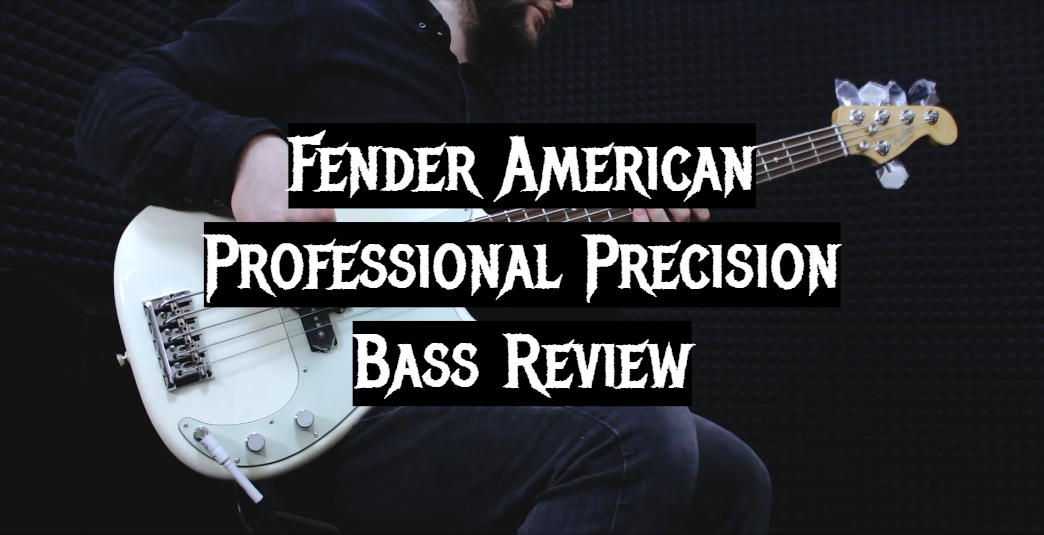
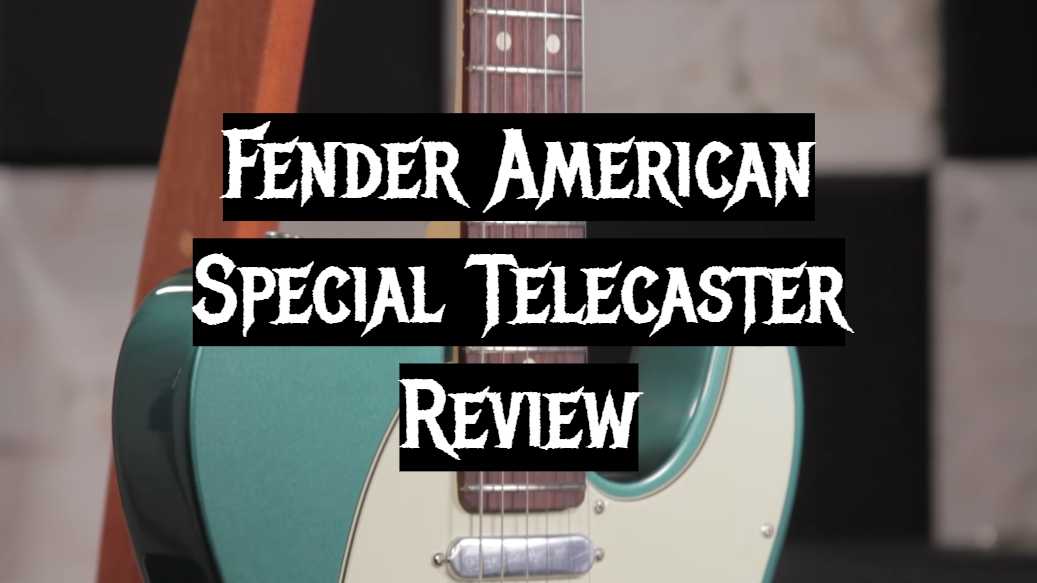
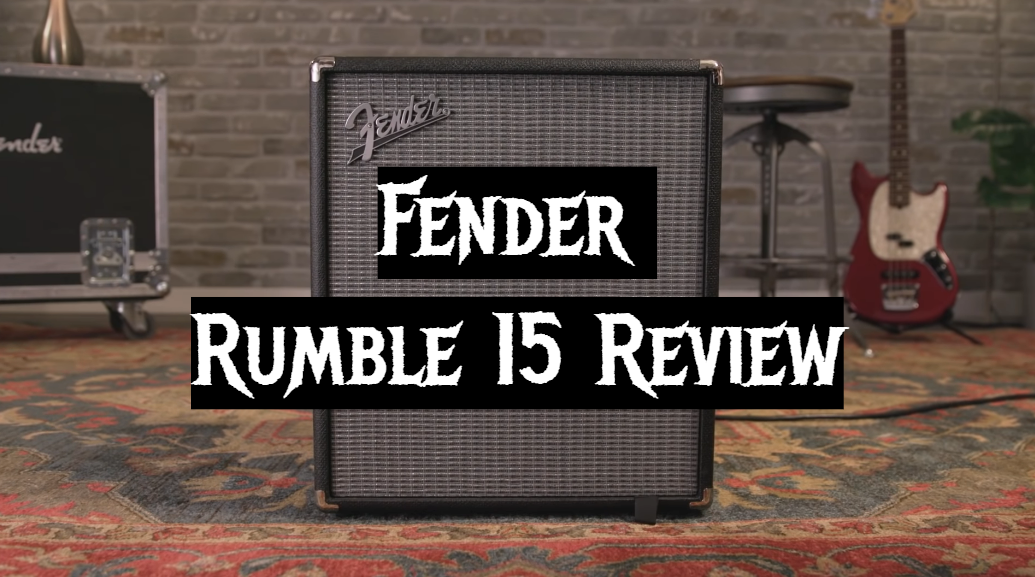
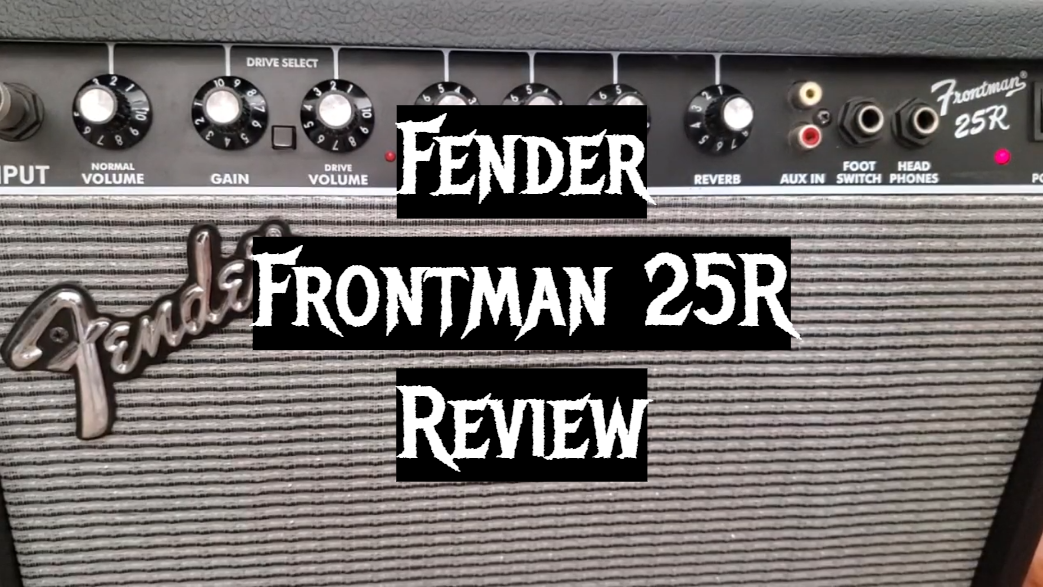
Leave a Reply